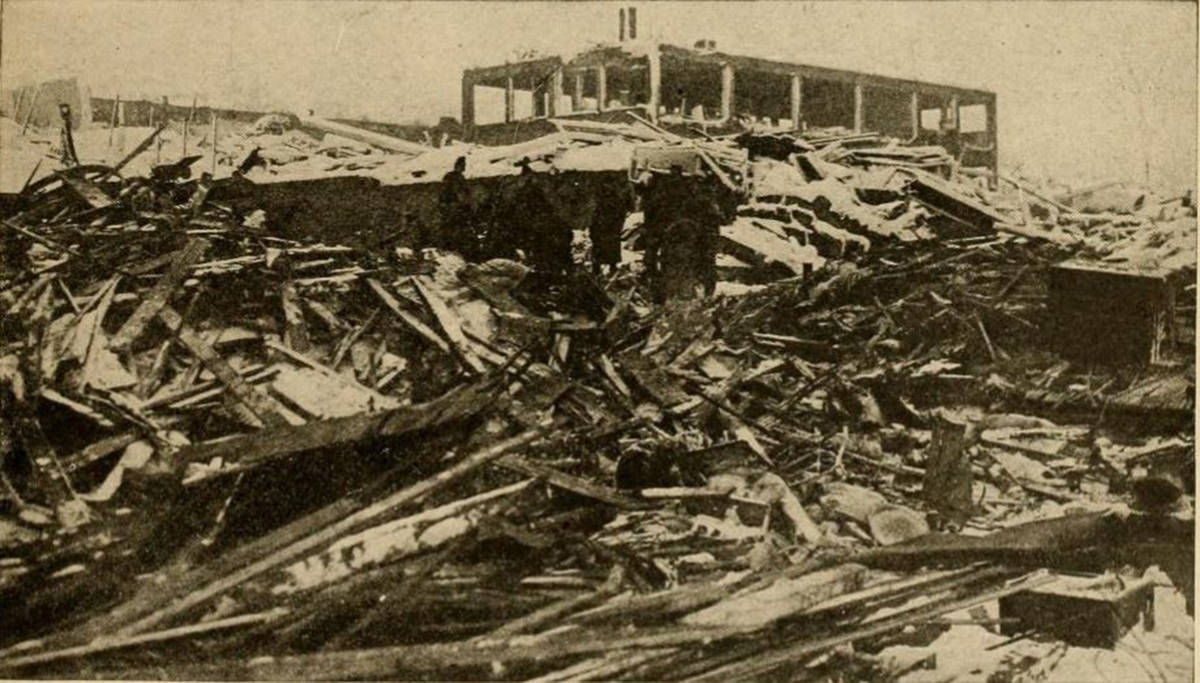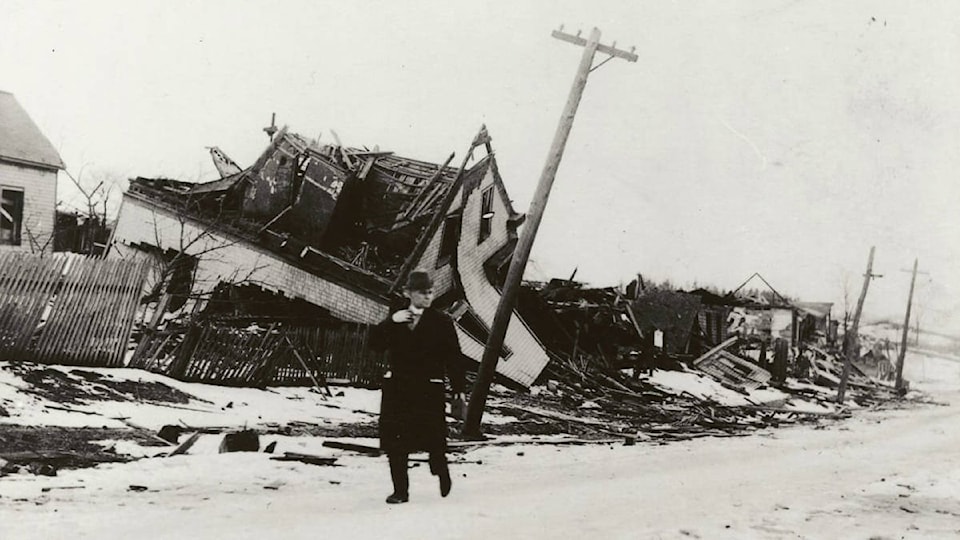As humble copy boy at the Daily Colonist I have gone where no others would go before me.
I haven’t always recorded Cowichan Valley and provincial history in the Chronicles. For more than 10 years I met a weekly deadline to fill two pages in the weekend magazine section of what was then the Daily Colonist, focusing mainly on Victoria and Vancouver Island personalities, subjects and locales.
In that role of researcher and recorder, I’ve vicariously sailed aboard the ill-fated passenger liner Lusitania, pulled survivors from another torpedoing and another war in the North Atlantic, tracked an Inuit murderer across the high Arctic, survived the great explosion of Halifax, and helped to blow up Ripple Rock.
I have, in fact, gone where no others would go before me. Because the senior reporters didn’t want to do it, I, as humble copy boy aspiring to be a reporter, was condemned to interviewing ‘old fogies’. My first interview by default was one of the most rewarding of the many which have followed over what has become decades because it opened my eyes to, among other things, the fact that ‘old age’ truly is just a state of mind.
Mind you, this revelation didn’t come to me with a thunderclap. I was, after all, 17, green and shy (an almost lethal combination for a would-be journalist). But I also had the arrogance of innocence, that lack of understanding of the world about me that blinkers youth. It took firm prodding from the city desk, several visits to the ‘old folks home,’ and a 92-year-old man to open my eyes and thus encourage me on my fledgling career path.
I was reminded of this milepost in my career with the announcement in the Times-Colonist that Victoria’s long serving Kiwanis Village, a subsidized type of retirement home built and operated by that civic-minded service group, is to be closed for demolition and reincarnation. The Village was composed of detached dwellings for couples; the Villa was a separate apartment-style structure for singles.
That’s where I met Charles Taylor, a nonagenarian and widower, in the Villa, because none of the reporters could be bothered to interview an old man who’d come to the city desk’s attention as “the first white child born in Port Alberni”. So it befell the humble copy boy who aspired to be a reporter.
I’ll never forget that first visit. Although built on a concrete slab, the Villa was rocking that day. I mean, really! As we sat in his tiny room, just large enough for a small bed, small closet and some chairs, and a fold-out desk, I could feel the floor vibrating beneath my feet. Way down the hallway, after lunch, the tables and chairs had been pushed aside, the piano fired up and the dining room transformed into a lively dance hall. It was really popping. So much for my preconceived notions about old folks and rocking chairs in the sun room!
Although hard of hearing, and a little stiff in the joints, there was nothing ancient about my subject’s brain. With sparkling eye and with great recall Mr. Taylor spoke of his growing up in the Alberni Valley. It’s as well I’d invested in a portable tape recorder (not yet having mastered shorthand) as I’d never have been able to keep up with him. I hardly needed to ask a question — I just sat back and listened as the years fell away. He spoke of growing up on the Island’s west coast before the turn of the last century, of life as a timber cruiser, of Indian legends of a monster in Sproat Lake, of the many colourful characters he’d known, and of the numerous tragedies which seemed to have cursed that region for many years. This was pioneer life in the raw, as told in living colour by an old man of firsthand experience to a youth with none of his own.
Charles Taylor died not long after my several interviews. I regret to say that I didn’t attend his funeral, despite a telephoned invitation from his son. I lied that I had a dental appointment. Just another of youth’s foibles: I didn’t ‘do’ funerals then. (I’ve changed my mind since.)
There were other interviews over the years, each as unique in story content as their tellers. Florence Padley survived the 1915 torpedoing of the S.S. Lusitania that claimed the lives of 1,198 men, women and children, and contributed to the United States entering the war against Germany. W.O. Douglas not only told me of having joined the North West Mounted Police (predecessor to the RCMP), but wrote it out for me longhand — more than 100 pages of neat script detailing how he chased on ‘Eskimo’ (Inuit) murderer for hundreds of miles and more than a year across the Arctic, and how he battled bootleggers in northern Manitoba — all this before he joined the Hudson’s Bay Co. and pioneered Canadian mink farming.
I became friends with a man I interviewed who’d risen to the rank of major in the trenches of Europe during the First World War. He’d been decorated and wounded twice. What resonated most with me (I was of age to be prime cannon fodder should Canada find itself in another war) was the day that he told me that Armistice had probably saved him. Not just from the Germans but from his own army; upon recovering from his second, severe wounding, he’d realized that he just couldn’t return to the front lines, he couldn’t bear to return to that hell, to go through it all again. He’d had enough. This, I remind you, was a man who’d already served for two years at the front, who’d done his duty to God, King and Country at a time when those who balked the system or, worse, deserted, could be shot. Two generations of my family had given dearly during two wars; I didn’t want to make it a third. It was something that I’ve thought about over the years and always comes back to me when reading, researching and writing about Canada’s outstanding role in two world wars.
Then there was Glaswegian John Lawson ‘Jock’ Hamilton who survived the great Halifax explosion of 1917 that saw almost the entire city levelled when two ships collided in the harbour, one of Canada’s worst disasters ever. But my favourite anecdote is of when, as a portrait photographer before he came to Canada, he was commissioned to photograph the Prince of Wales. When His and Her Highness appeared for the sitting, it was immediately apparent that the royal heir was so drunk he couldn’t stand straight or still. These, in that age of slow camera lenses, were prerequisites for a successful shooting.
After several failed attempts to capture the prince on film, Jock gently told Her Highness that it was useless to continue. Obviously practised in such matters, she instructed Jock to reload his camera and, when ready to release the shutter, to give her the signal. Jock burrowed under the camera’s hood and re-checked his focus as she again steered the befuddled prince before the staged backdrop. At Jock’s signal, she stood back, just out of frame and, with all of her might, kicked her husband square in the shin! (Obviously, she wasn’t wearing ballerina slippers.) With a shriek of pain and rage, he bolted upright, Jock snapped the shutter and — poof! — it was done.
Jock Hamilton was 81 when I interviewed him, although he looked and acted much younger. He attributed his good health to the pint of whisky he downed daily for medicinal purposes. A habit he’d acquired at his grandmother’s knee.

